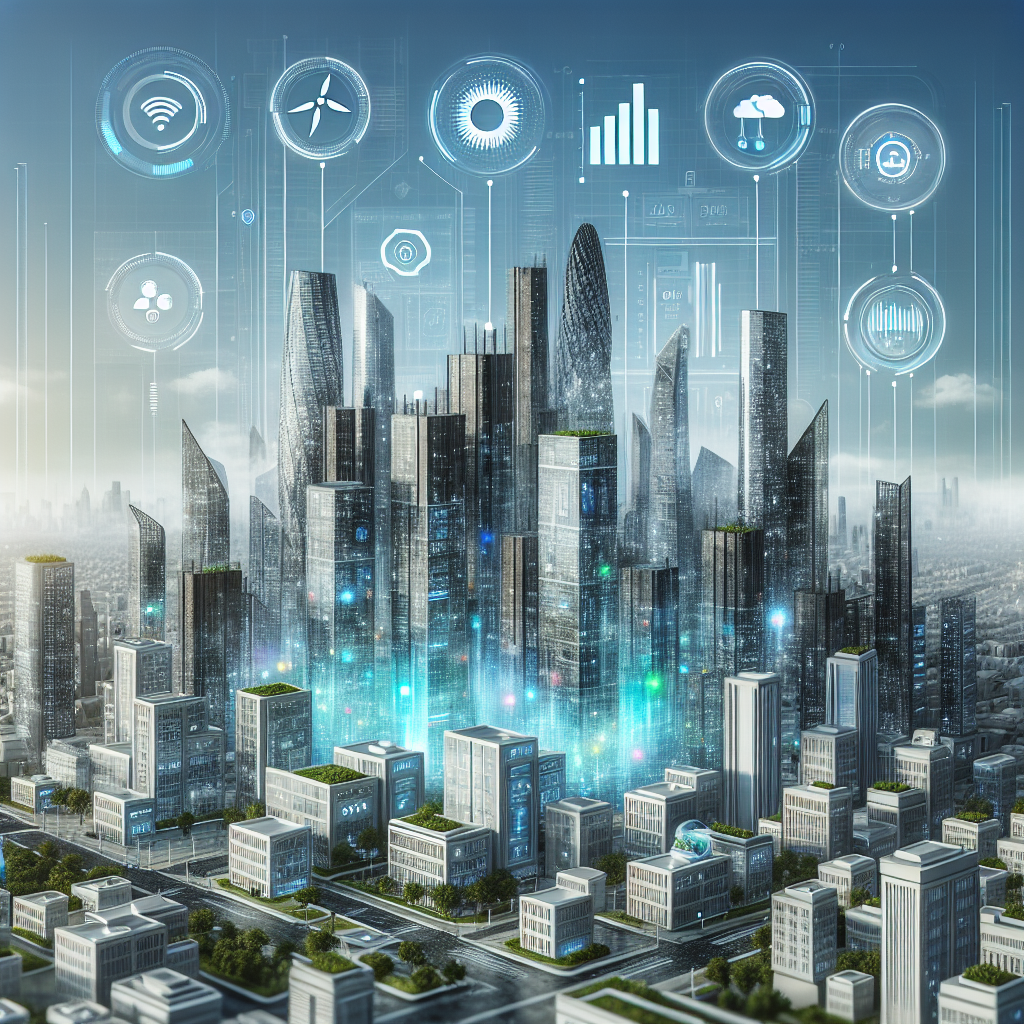In recent years, the concept of smart buildings has gained significant traction in the architecture and construction industry. With the rise of artificial intelligence (AI) technology, buildings can now be designed and operated in a more energy-efficient and sustainable manner. AI-powered smart buildings are equipped with sensors, actuators, and other smart devices that collect and analyze data to optimize energy usage, improve building performance, and enhance occupant comfort.
AI technology has revolutionized the way buildings are designed, constructed, and managed. By leveraging AI algorithms, smart buildings can predict energy consumption patterns, identify inefficiencies, and make real-time adjustments to optimize energy usage. This not only reduces operational costs but also minimizes environmental impact and enhances overall sustainability.
One of the key benefits of AI-powered smart buildings is their ability to adapt to changing environmental conditions. By continuously monitoring factors such as temperature, humidity, occupancy levels, and sunlight exposure, AI systems can automatically adjust heating, cooling, lighting, and ventilation systems to optimize energy usage while maintaining a comfortable indoor environment. This level of automation and control ensures that buildings are operating at peak efficiency at all times, resulting in significant energy savings and reduced carbon emissions.
Another advantage of AI-powered smart buildings is their ability to proactively identify and address maintenance issues. By analyzing data from sensors and equipment monitoring systems, AI algorithms can detect potential equipment failures or malfunctions before they occur, allowing building managers to schedule timely repairs and prevent costly downtime. This predictive maintenance approach not only extends the lifespan of building systems but also reduces energy waste and improves overall operational efficiency.
AI technology also enables smart buildings to participate in demand response programs, where they can adjust energy usage in response to grid conditions and pricing signals. By leveraging AI algorithms to forecast energy demand and optimize consumption, smart buildings can help reduce peak demand, alleviate strain on the grid, and lower electricity costs for building owners. This not only benefits individual buildings but also contributes to a more resilient and sustainable energy infrastructure at the community and city level.
In addition to energy efficiency and sustainability benefits, AI-powered smart buildings also enhance occupant comfort and productivity. By monitoring factors such as air quality, lighting levels, and acoustic conditions, AI systems can create personalized environments tailored to individual preferences and needs. This level of customization not only improves occupant satisfaction but also boosts productivity, creativity, and overall well-being in the workplace.
FAQs:
Q: How does AI technology improve energy efficiency in smart buildings?
A: AI algorithms analyze data from sensors and smart devices to optimize energy usage, identify inefficiencies, and make real-time adjustments to building systems. This proactive approach helps reduce energy waste, lower operational costs, and minimize environmental impact.
Q: What are the environmental benefits of AI-powered smart buildings?
A: AI-powered smart buildings help reduce carbon emissions by optimizing energy consumption, participating in demand response programs, and promoting sustainability practices. By leveraging AI technology, buildings can operate more efficiently and contribute to a greener and more sustainable built environment.
Q: How can AI technology enhance occupant comfort in smart buildings?
A: AI systems monitor factors such as temperature, humidity, lighting, and air quality to create personalized environments tailored to individual preferences. By adjusting building systems in real-time, AI-powered smart buildings ensure that occupants are comfortable, productive, and satisfied with their indoor environment.
Q: What are the cost savings associated with AI-powered smart buildings?
A: AI-powered smart buildings can reduce operational costs by optimizing energy usage, identifying maintenance issues, and participating in demand response programs. By leveraging AI technology to improve efficiency and performance, buildings can achieve significant cost savings over time.
In conclusion, AI-powered smart buildings represent a significant advancement in the architecture and construction industry, offering a wide range of benefits for building owners, occupants, and the environment. By leveraging AI technology to optimize energy usage, improve building performance, and enhance occupant comfort, smart buildings can achieve higher levels of energy efficiency, sustainability, and operational efficiency. As AI technology continues to evolve and become more integrated into building design and management practices, the potential for smart buildings to transform the way we live, work, and interact with our built environment is limitless.

